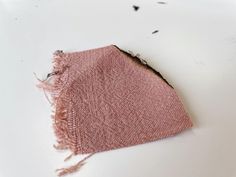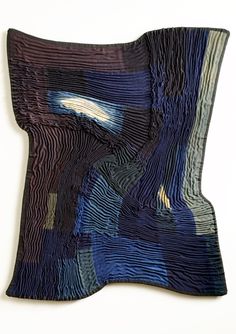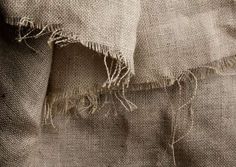Fibre to Fabric
Understanding the journey from fibre to fabric is fundamental for fashion designers as it forms the basis of creating garments that are not only aesthetically pleasing but also functional and comfortable. This class note delves into the processes involved in transforming raw fibres into wearable fabrics, the types of fibres used in fashion, fabric construction methods, and the significance of sustainable practices in the textile industry.
Types of Fibres

1. Natural Fibres:
- Cotton: Known for its breathability, softness, and versatility. Used widely in casual and everyday wear.
- Silk: Renowned for its luxurious feel and natural sheen. Used in high-end fashion for eveningwear and delicate garments.
- Wool: Offers warmth and insulation. Used in knitwear and outerwear.
- Linen: Lightweight and breathable. Ideal for summer clothing and casual wear.
- Hemp: Durable and eco-friendly. Increasingly used in sustainable fashion due to its minimal environmental impact.
2. Synthetic Fibres:
- Polyester: Versatile, durable, and wrinkle-resistant. Used in a wide range of fashion garments.
- Nylon: Strong, elastic, and abrasion-resistant. Used in activewear and hosiery.
- Acrylic: Soft and lightweight. Used as a substitute for wool in knitwear.
- Spandex (Lycra): Elastic and stretchable. Blended with other fibres to provide flexibility in clothing.
3. Semi-Synthetic Fibres:
- Viscose (Rayon): Soft and breathable. Used as an alternative to silk or cotton in various garments.
- Modal: Soft, smooth, and highly absorbent. Used in loungewear and intimate apparel.
Fibre Processing

1. Preparation:
- Harvesting: Natural fibres like cotton and wool are harvested from plants (cotton bolls) or animals (sheep).
- Extraction: Silk is extracted from silkworm cocoons, while other fibres like hemp and flax are derived from plant stems.
2. Spinning:
- Carding: Fibres are cleaned, straightened, and aligned into a thin web.
- Combing: Further straightens and aligns fibres to remove short fibres and produce a finer yarn.
- Spinning: Twisting fibres into yarns using spinning machines to enhance strength and durability.
Fabric Construction Methods
1. Weaving:
- Plain Weave: Simple over-under pattern. Fabrics like cotton poplin and chiffon are examples.
- Twill Weave: Diagonal pattern. Fabrics like denim and gabardine are examples.
- Satin Weave: Smooth and shiny surface. Fabrics like satin and charmeuse are examples.
2. Knitting:
- Single Jersey: Basic knit used in t-shirts and lightweight garments.
- Rib Knit: Stretchy and textured. Used in cuffs, collars, and hems.
- Interlock Knit: Double-layered knit with a smooth surface. Used in activewear and intimates.
3. Non-Woven Fabrics:
- Felt: Compressed fibres without weaving or knitting. Used in hats, bags, and industrial applications.
- Bonded Fabrics: Fibres bonded together through heat, chemicals, or mechanical processes. Used in upholstery and outerwear.
Textile Finishing
1. Dyeing and Printing:

- Dyeing: Adding color to fabrics using dye solutions or pigments. Techniques include vat dyeing, direct dyeing, and discharge printing.
- Printing: Applying designs onto fabric using methods like screen printing, digital printing, and block printing.
2. Finishing Treatments:
- Bleaching: Whitening fabrics to achieve uniform color or prepare for dyeing.
- Calendering: Smoothing fabrics through heat and pressure to enhance surface appearance.
- Waterproofing: Adding coatings or treatments to make fabrics resistant to water.
Sustainable Practices in Textiles
In recent years, there has been a growing emphasis on sustainability in the fashion industry. Sustainable practices in fibre to fabric processes include:
1. Use of Eco-Friendly Fibres:
- Organic Cotton: Grown without synthetic pesticides or fertilizers.
- Tencel (Lyocell): Made from sustainably sourced wood pulp using a closed-loop process.
2. Recycling and Upcycling:
- Recycled Polyester: Using PET bottles to create polyester fibres.
- Upcycling: Repurposing old garments or fabrics into new products.
3. Water and Energy Efficiency:
- Waterless Dyeing Techniques: Using minimal water in dyeing processes.
- Energy-Efficient Manufacturing: Using renewable energy sources and efficient machinery.
4. Ethical Practices:
- Fair Trade: Ensuring fair wages and safe working conditions for textile workers.

Conclusion
Understanding the journey from fibre to fabric equips fashion designers with the knowledge to make informed decisions about material selection, fabric construction methods, and sustainability practices. By integrating these insights into their design processes, designers can create garments that not only reflect their artistic vision but also contribute positively to the environment and society. As the fashion industry continues to evolve, a focus on sustainable and ethical practices in fibre to fabric processes will be essential for shaping a more responsible and innovative future.
